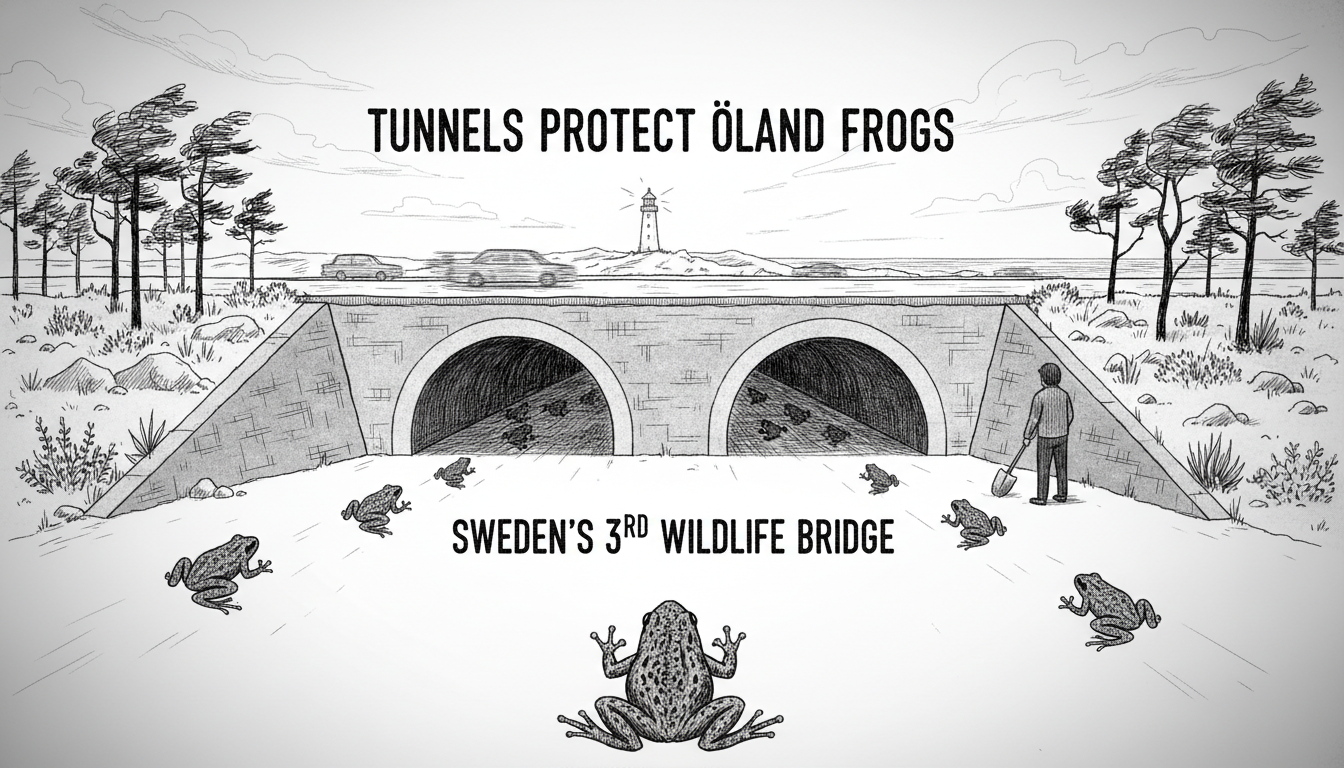Swedish transport authorities have installed three wildlife tunnels beneath a road on Öland island to protect migrating amphibians. The 200-meter road section near Rörkärret wetland now features underground passages specifically designed for frogs and reptiles.
Environmental specialists identified this location as crucial for animal movement between winter hibernation areas and spring breeding grounds. The Transport Administration states that removing barriers for wildlife forms part of their official mandate.
Eva Ditlevsen, an environmental specialist with the Transport Administration, explained the project's importance. "We map locations throughout the landscape with rich habitats for species like frogs and reptiles," she said in a statement. "This area has a large concentration of frogs that need safe passage routes."
The installation represents the third amphibian protection measure implemented by the Transport Administration on Öland. Officials confirm that previous similar projects have proven effective in reducing road fatalities among amphibian populations.
Barriers will guide frogs toward the tunnels, directing them safely beneath the roadway during seasonal migrations. This approach addresses one of the leading causes of amphibian population decline worldwide - vehicle collisions during breeding season migrations.
Sweden has increasingly incorporated wildlife crossings into infrastructure projects over the past decade. The country's environmental protection laws require transportation planners to consider ecological impacts when building or upgrading roads. This project reflects Sweden's broader commitment to balancing infrastructure development with biodiversity conservation.
Similar wildlife tunnels have shown success across Scandinavia. Norway's extensive system of amphibian tunnels has reduced road mortality by up to 90% in some locations. Denmark has also implemented numerous wildlife crossings, particularly in wetland areas.
For international observers, this project demonstrates Sweden's practical approach to environmental protection. Rather than relying solely on protected areas, Swedish authorities actively modify existing infrastructure to support wildlife. This represents a shift from reactive conservation to proactive habitat connectivity.
The Öland tunnels cost approximately 500,000 SEK to design and install. While not inexpensive, such investments may prove cost-effective by reducing the need for more extensive environmental mitigation later. They also help maintain healthy ecosystems that provide natural pest control and other benefits to agricultural areas.
Local residents have generally supported the project, recognizing that protecting amphibian populations contributes to the island's ecological health. Öland's unique limestone plain environment hosts several protected species that depend on wetland habitats.
What makes this approach noteworthy is its simplicity. Rather than complex technological solutions, the tunnels provide a straightforward way for animals to avoid traffic. Sometimes the most effective environmental solutions are also the most basic.
The Transport Administration plans to monitor tunnel usage through regular surveys. If successful, similar installations may expand to other high-risk road sections across Sweden's coastal regions.

